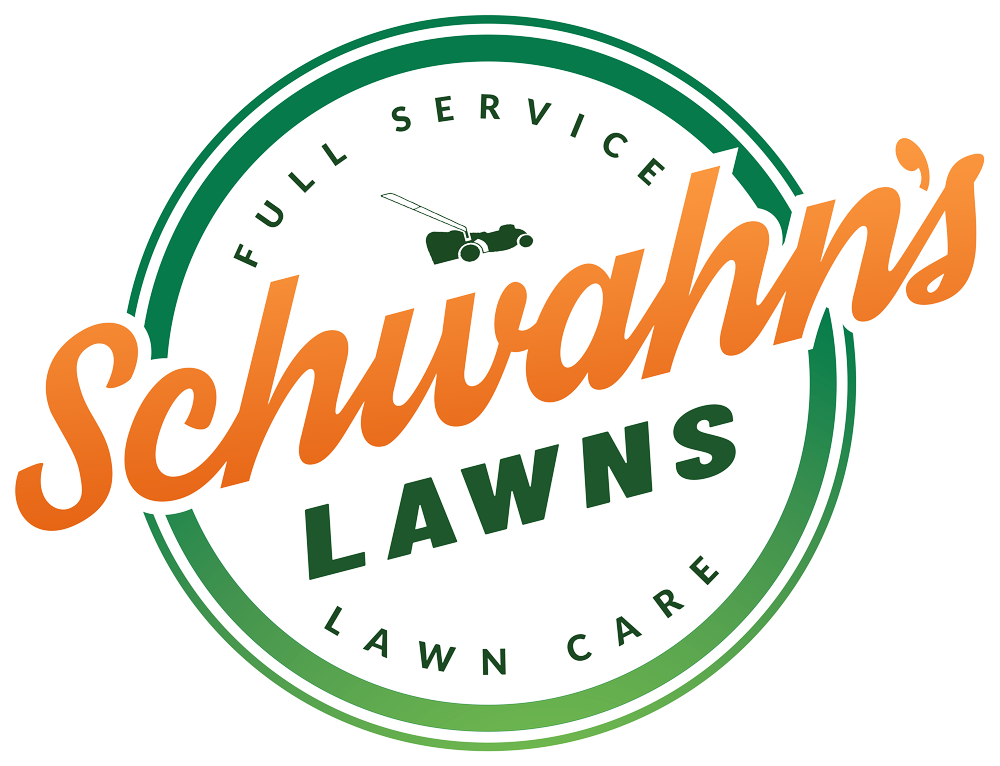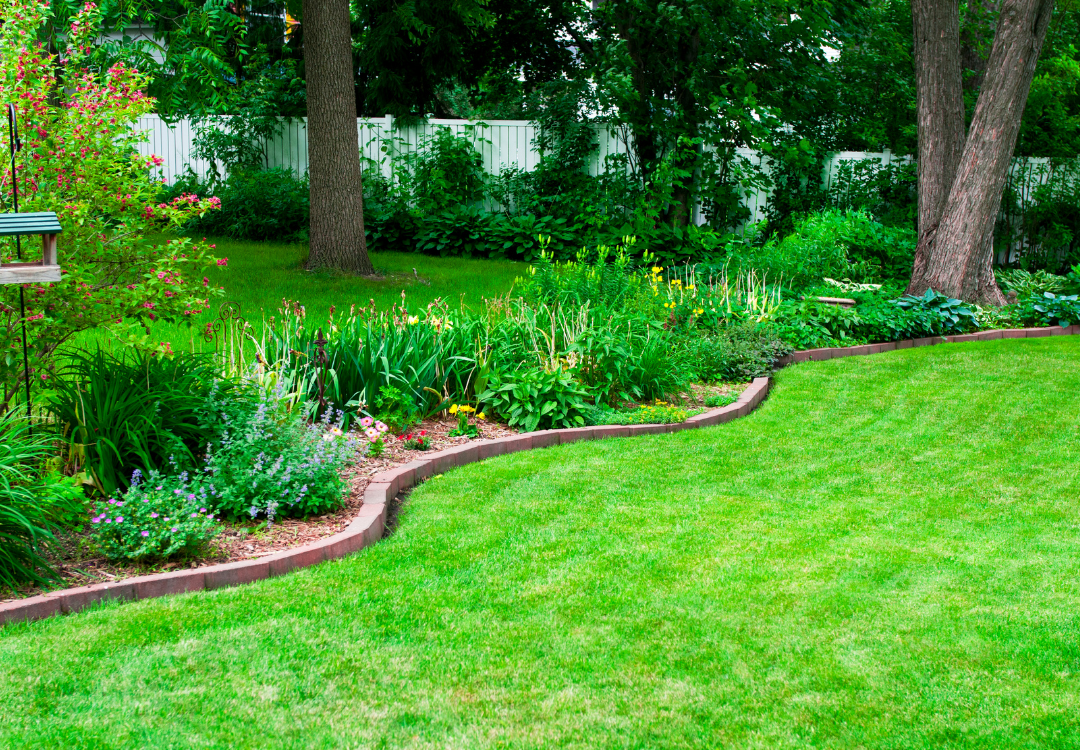By the Expert Team at Schwahn’s Lawns | Updated September 2025
Drawing from over 20 years of professional lawn care experience serving Clearwater, Tarpon Springs, and throughout Pinellas County, this comprehensive guide provides everything homeowners need to maintain beautiful, healthy lawns in Florida’s unique coastal climate.
Quick Navigation:
Maintaining a beautiful lawn in Pinellas County requires understanding Florida’s unique subtropical climate, sandy soil conditions, and specific regulations that govern lawn care practices. Whether you’re a new homeowner in Clearwater Beach or have been tending your Tarpon Springs property for years, this guide provides the expert knowledge you need to achieve lawn care excellence throughout the year.
Ready for Professional Results?
Skip the guesswork and get expert lawn care tailored to your Pinellas County property’s specific needs.
Understanding Pinellas County’s Unique Lawn Care Environment
Climate Challenges That Affect Your Lawn
Pinellas County’s coastal location creates specific challenges that distinguish it from inland Florida areas. The combination of salt air exposure, sandy soil, high humidity, and hurricane vulnerability requires specialized lawn care approaches that generic advice simply can’t address.
Subtropical Climate Factors:
- Year-round growing season: Unlike northern climates, Florida lawns never truly go dormant
- High humidity (70-80% average): Creates ideal conditions for fungal diseases
- Salt air exposure: Especially challenging for properties within 5 miles of the coast
- Sandy soil composition: Requires frequent fertilization and specialized amendments
- Hurricane season impacts: June through November brings storm damage risks
Why Location-Specific Expertise Matters
The difference between Clearwater Beach and inland Tarpon Springs properties can be dramatic. Coastal properties face salt spray damage, while inland areas deal with different soil compositions and microclimates. Professional lawn care experts in Clearwater understand these nuances and adjust treatments accordingly.
Important: Pinellas County’s fertilizer ordinance prohibits nitrogen and phosphorus applications from June 1 through September 30. Violating this ordinance can result in fines up to $500 per violation. Learn more about compliance below.
Your Year-Round Pinellas County Lawn Care Calendar
Spring (March – May)
Peak Growth Season
- Pre-emergent weed control
- Fertilization programs begin
- Irrigation system check
- First pest prevention treatments
- Soil testing and amendments
Summer (June – August)
Fertilizer Ban Period
- Focus on iron applications
- Intensive pest monitoring
- Disease prevention treatments
- Hurricane preparation
- Water management optimization
Fall (September – November)
Recovery & Preparation
- Resume fertilization programs
- Overseeding opportunities
- Hurricane damage repair
- Fall disease management
- Winter preparation
Winter (December – February)
Mild Growth Period
- Reduced mowing frequency
- Cold damage protection
- Planning landscape projects
- Equipment maintenance
- Brown patch monitoring
Choosing the Right Grass Type for Your Pinellas County Property
Success in Florida lawn care begins with selecting the appropriate grass type for your specific location and lifestyle. Each variety has distinct characteristics that make it more or less suitable for coastal conditions, foot traffic, and maintenance preferences.
| Grass Type | Best For | Salt Tolerance | Maintenance Level | Cost Range |
|---|---|---|---|---|
| St. Augustine | Most Pinellas properties | Good to Excellent | Moderate | $0.45-$0.65/sq ft |
| Bahia | Low-maintenance areas | Good | Low | $0.20-$0.35/sq ft |
| Zoysia | Premium properties | Excellent | High | $0.80-$1.20/sq ft |
| Bermuda | High-traffic areas | Excellent | High | $0.35-$0.55/sq ft |
| Centipede | Acidic soil areas | Fair | Low | $0.30-$0.50/sq ft |
St. Augustine Grass: The Pinellas County Favorite
Over 70% of Pinellas County lawns feature St. Augustine grass varieties, making it the clear regional favorite. Its excellent salt tolerance, shade adaptation, and thick growth pattern make it ideal for coastal properties. However, it requires specific care to prevent common issues like chinch bugs and brown patch fungus.
For detailed guidance on maintaining this popular grass type, see our comprehensive guide on St. Augustine grass care in Clearwater.
🌱 Related Specialized Guides
Understanding Pinellas County’s Fertilizer Ordinance
Pinellas County’s fertilizer ordinance is among Florida’s most comprehensive, designed to protect local waterways from nutrient pollution while maintaining healthy lawns. Understanding and complying with these regulations is essential for responsible lawn care.
Key Ordinance Requirements
Summer Fertilizer Ban (June 1 – September 30)
- Prohibited: All nitrogen and phosphorus fertilizers
- Allowed: Iron, potassium, micronutrients, organic matter
- Penalty: Up to $500 per violation
- Enforcement: Code enforcement and environmental officers actively monitor
Year-Round Requirements
- Annual nitrogen limit: Maximum 4 pounds per 1,000 square feet
- Slow-release requirement: At least 50% slow-release nitrogen
- Buffer zones: No fertilizer within 10 feet of water bodies
- Professional certification: Required for all commercial applicators
For homeowners concerned about maintaining lawn health during the restriction period, our detailed guide on navigating Florida’s fertilizer laws provides legal alternatives and compliance strategies.
Worried About Fertilizer Compliance?
Let our certified professionals handle all fertilizer applications with guaranteed ordinance compliance.
Common Pests and Diseases in Pinellas County
Florida’s warm, humid climate creates ideal conditions for various lawn pests and diseases. Early identification and proper treatment are crucial for maintaining healthy lawns throughout the year.
Primary Pest Concerns
Chinch Bugs (Peak: May – October)
These tiny insects cause significant damage to St. Augustine grass by sucking plant juices and injecting toxins. Damage appears as irregular yellow patches that quickly turn brown. Professional treatment is often necessary due to their resistance to many over-the-counter products.
Grub Worms (Peak: August – November)
White C-shaped larvae feed on grass roots, causing loose, spongy turf that can be rolled back like carpet. Female beetles lay eggs in summer, with damage typically appearing in fall.
Army Worms (Peak: September – November)
These caterpillars can devastate entire lawns overnight, particularly after periods of heavy rain. Early morning inspection often reveals them feeding before they hide during daylight hours.
Common Diseases
Brown Patch Fungus (Peak: October – May)
Circular brown patches ranging from 1-20 feet in diameter affect most grass types during cooler, humid periods. Proper fungicide application and cultural practices can prevent widespread damage.
Gray Leaf Spot (Peak: June – September)
Particularly problematic on St. Augustine grass during hot, humid summer months. Appears as small gray spots with dark borders on grass blades.
For immediate pest identification and treatment, our specialists provide professional chinch bug treatment in Clearwater and surrounding areas.
Professional vs. DIY Lawn Care: Making the Right Choice
Many Pinellas County homeowners face the decision between maintaining their lawns themselves or hiring professional services. This choice depends on several factors including time availability, expertise level, and desired results.
DIY Lawn Care Considerations
Advantages:
- Lower upfront costs for basic maintenance
- Complete control over timing and methods
- Personal satisfaction from hands-on care
- Learning opportunity for lawn care enthusiasts
Challenges:
- Significant time investment (3-5 hours weekly)
- Equipment purchase and maintenance costs
- Learning curve for pest/disease identification
- Fertilizer ordinance compliance complexity
- Limited access to commercial-grade products
Professional Lawn Care Benefits
Expertise and Experience:
Professional services like Schwahn’s certified lawn care experts bring over 20 years of local experience, understanding the specific challenges of Pinellas County properties.
Time and Convenience:
Professional services typically save homeowners 150+ hours annually while delivering superior results through:
- Consistent maintenance schedules
- Expert pest and disease diagnosis
- Guaranteed ordinance compliance
- Access to commercial-grade products
- Comprehensive treatment programs
For a detailed comparison of costs and benefits, see our guide on Professional vs. DIY lawn care for Clearwater homeowners.
Eco-Friendly Lawn Care Options
Growing environmental awareness has increased demand for sustainable lawn care practices that protect local waterways while maintaining beautiful landscapes. Organic and eco-friendly approaches offer excellent alternatives for environmentally conscious homeowners.
Benefits of Organic Lawn Care
- Safe for children, pets, and beneficial insects
- Improves long-term soil health
- Reduces environmental impact
- Often more effective in Florida’s sandy soils
- Builds natural disease resistance
Organic lawn care requires specialized knowledge of soil biology and organic product applications. Our comprehensive guide to organic lawn care in Tarpon Springs explains how these methods work particularly well in coastal environments.
Seasonal Maintenance Tips
Spring Preparation (March – May)
Spring represents the most critical time for establishing healthy lawn growth patterns. Key activities include:
- Soil testing: Determine pH and nutrient needs
- Pre-emergent applications: Prevent crabgrass and other annual weeds
- Irrigation system inspection: Ensure optimal water distribution
- Fertilization: Begin balanced feeding programs
- Aeration: Improve root growth in compacted soils
Summer Management (June – August)
Summer focuses on maintaining lawn health during the most stressful period:
- Iron applications: Maintain green color during fertilizer ban
- Deep watering: Encourage deep root growth
- Pest monitoring: Watch for chinch bugs and other insects
- Hurricane preparation: Ensure drainage and debris removal
Fall Recovery (September – November)
Fall provides opportunities for repair and preparation:
- Fertilization resumes: Begin recovery feeding programs
- Overseeding: Fill thin or damaged areas
- Disease prevention: Apply fungicides before cooler weather
- Storm damage repair: Address hurricane-related issues
Winter Maintenance (December – February)
Winter requires minimal but important activities:
- Reduced mowing: Adjust frequency to slower growth
- Cold protection: Prepare for occasional freezes
- Planning: Design landscape improvements
- Equipment maintenance: Service tools and irrigation systems
Ready to Transform Your Pinellas County Lawn?
Whether you’re starting fresh or improving an existing lawn, professional guidance ensures the best results for your investment.
Free consultation includes:
- ✓ Property assessment and grass type evaluation
- ✓ Customized seasonal care plan
- ✓ Pest and disease risk analysis
- ✓ Detailed service and pricing options
Schedule Your Free Lawn Assessment
Call 561-325-9537 or 727-373-6985
📚 Complete Your Lawn Care Education
Explore our specialized guides for deeper insights:
- → Organic Lawn Care in Tarpon Springs: The Safe, Effective Alternative
- → St. Augustine Grass Care in Clearwater: Your Complete Seasonal Guide
- → Luxury Lawn Care for Clearwater Beach & Waterfront Properties
- → Navigating Florida’s Fertilizer Laws: Pinellas County Compliance Guide
- → Professional vs. DIY Lawn Care: What Clearwater Homeowners Need to Know
About Schwahn’s Lawns
For over 20 years, Schwahn’s Lawns has provided expert lawn care services throughout Pinellas County, specializing in the unique challenges of Florida’s coastal environment. Our certified professionals understand the specific needs of Clearwater, Tarpon Springs, and surrounding communities.
Services include: comprehensive lawn care, organic treatments, commercial landscaping, and emergency storm cleanup.


